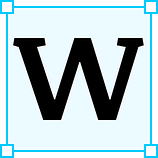Finding your place as a designer in a start-up
Don’t let the title get in the way.
 Working in a start-up, when you are the first or sole design hire can be a pretty daunting experience. There are no best practices, no tried-and-tested methods, no mentor figure beside you. You might have a pile of shoddy or messy documentation of some sketches, ideas left lying around in the bowels of the team’s Google Drive. The engineering team is already so used to working week to week without a designer’s input. Hurray! You are now the first design hire with the opportunity to transform the whole design outlook of the budding product, and essentially what the word Design would mean internally. No pressure.
Working in a start-up, when you are the first or sole design hire can be a pretty daunting experience. There are no best practices, no tried-and-tested methods, no mentor figure beside you. You might have a pile of shoddy or messy documentation of some sketches, ideas left lying around in the bowels of the team’s Google Drive. The engineering team is already so used to working week to week without a designer’s input. Hurray! You are now the first design hire with the opportunity to transform the whole design outlook of the budding product, and essentially what the word Design would mean internally. No pressure.
What is a product designer?
My answer now: A much-needed facilitator, sometimes mediator, sometimes the person who opens the can of worms.
Getting thrown into an environment where hardly anyone understands the value you bring as a designer to the table IS overwhelming. It is easy to get all swept up with the pixel work to want to prove your worth and flash your chops. It is easy to start taking over cards in the project management tools and dive right in. In the process, I realised that the best thing to do that I can do is perhaps to take a step back and observe. You want to be asking questions, be inquisitive and not to try and solve every design problem hurriedly that comes your way. Figure out the rough lay of the land. Scrutinise, have 1:1 conversations. Integrating with the team takes time and having clarity of the inner workings of the company is a great upside. By making the understanding of the problem space and building rapport with your team a priority, you give yourself the breath and space needed to bring product design into the forefront of things.
As I’ve matured as a product designer, I’ve started to jot down random pondering and reflection in my Notes app. Here are some of my strategies that I’ve relied on to deliver in my role.
1. Start by recognising the drivers behind decision making in product development.
There are tons of low-hanging fruit or UI tweaks in the room that you may feel tempted to tackle but it will be of much greater impact if you spend time on shifting upstream to focus on what shapes the product work so far. I am a big fan of observing the dynamics and conversations between team members when they make product decisions in order to figure out where I can best contribute.
Identify how the product roadmap impacts and flows to the development. How does the team collaborate cross-functionally when working on weekly sprints?
- Is there a clear decision-maker?
- Do people sit in 3-hour meetings to decide on a feature?
- How does the group deal with unresolved discussion points?
- Does the discussion reflect the core values of the team?
- Who do they consult?
- Get a feel for what the history of collaboration had been without the design function. Are there critical parts that you can dive in?
In a team where everyone is a stakeholder in the product team, it is crucial to understand the principles that are at work (usually found when there’s a contention, when things are unclear, hand-offs). You can better assess what is core, what keeps the team grounded and most importantly, the DNA of the company in its day-to-day operations.
While working on the Pride in London project, one of the major product principles the team pinned down at the start was accessibility. From there, every user flow, bug triage, feature that we had to prioritise, we ask: “Are we implementing it in a way where it is accessible to the groups of users we’ve identified? Can we further simplify the writing in this screen? Will the users comprehend these terms? If this preventing our users from navigating the parade?” Having a clear intent helps the project team to hone in on what matters.
2. Take the lead to get others into the fold
It is maybe sometimes extremely difficult for others to understand what the design function is about. If your team is unfamiliar, your scope as a designer may seem like a black box. Open up and proactively question about the users with everyone — understand their knowledge and perception of the users’ problems. How are users’ motives, behaviours, anecdotes being shared in the team? If you’re working in a start-up where the domain is specific, this becomes a very important focus area for the design discipline to help demystify and involve the team.
With every user interview/product discovery process: notice how insights are being shared across the company.
- How are the insights impacting the product roadmap?
- Does everyone get involved in understanding the users’ context?
- Identify blind spots e.g. are the engineering folks are sometimes very far removed from the interviews?
- How can design help to navigate, improve that?
- Are there different takes on what the user context is?
Be in charge of telling the story to the entire company. Find creative ways to share these insights (meetings may bore some). Draw on the whiteboard, post snippets on Slack, have water-cooler conversations — your teammates can then help to bounce off ideas and weigh in on decisions in their functions. That’s step no.1 in building user-centered solutions.
I find whiteboarding very clarifying and communicative. Find a huge space in the office (preferably somewhere that has a lot of foot traffic) — start by drawing the major milestones of the user’s journey. By highlighting the unknowns and the needs in different colours, this helps to differentiate major types of information. The whiteboard then becomes a useful point of communication to bolster understanding of user’s context for everyone in the company. If we’re talking about prioritisation, what are the flows the proposals are impacting? If we’re talking about implementation, what are the other tools and services that are intertwined with the users’ flow?
3. Look outwards
I get a front-row seat to the product development and participate heavily in the QA/testing of features. It becomes clear that the more I understand the the different ingredients that go into shipping, the more effective I become as a team player. This may seem a lot, especially if you are coming in as a junior designer. Does this mean you have to code? Or start picking up programming languages? How do you even get started?
- De-bug with the engineers. Sometimes, I find it awfully convenient to work right beside a back-end engineer in the team and asking what was the issue that prohibited a component, a desired functionality from working right. Focusing on a specific bug is good way to start piecing together how things work under the hood.
- Learn about how design directly or in-directly ties up with the work of other functions. At the end of each sprint or cycle, reflect on how the design work impacts the engineers. By reflecting, have a sit-down with them (if your company doesn’t do retrospectives). What frustrates them? Hearing their considerations and stumbling blocks help you to identify the gaping holes in the cross-functional work. Don’t expect to eradicate or overcome everything they bring up. Identify a critical piece and focus on improving that next sprint. A lot of times, I find myself in conversations where engineers felt that the design work proposed can be further simplified but they kept quiet as they felt they are not empowered to comment on the design revisions. If left unnoticed, this would have had detrimental impact on how functions work with design in the future.
While learning about technical or other functions may not seem your cup of tea, starting conversations early helps to build rapport and bring down the unnecessary barriers between functions. Collaboration happens easily when teammates know when to bring in the design’s perspective and design knows how to best weigh in.
Final note: Shape your own role
It’s okay to be not familiar with what “you’re supposed to do” and how much of an impact you can bring about. Your true responsibilities at a growing start-up hardly stops at the job description. Seek out what works for you, exhilarates you, challenges you and mold your role to fill that gap needed in your company. Make the part work for you. •
